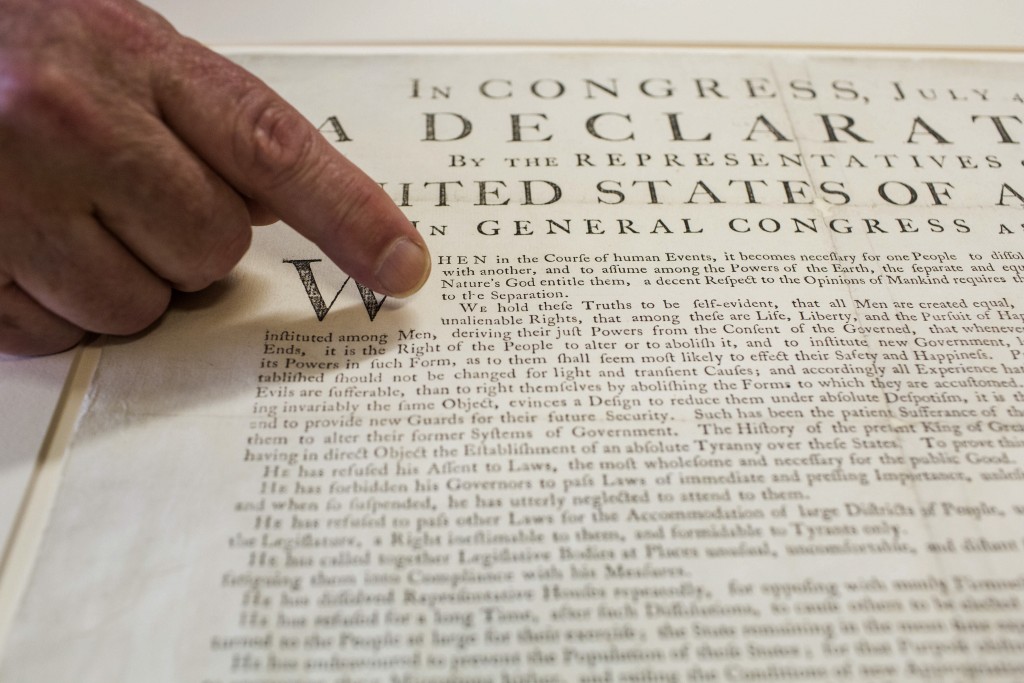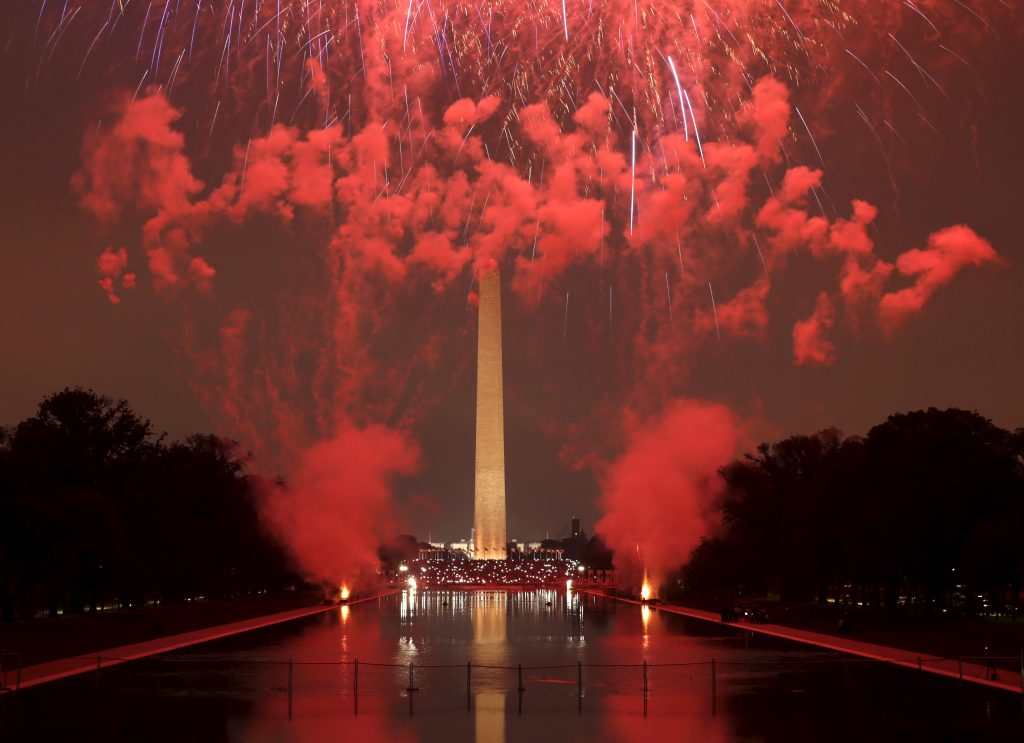Here are eight things you might not have known about the Fourth of July.
1. The colonies officially declared independence on July 2
On July 2, 1776, the Second Continental Congress approved delegate Richard Henry Lee’s motion for independence, dissolving the political bands that connected the 13 American colonies to the crown.
July 4 is celebrated as Independence Day because the Congress approved the Declaration of Independence on July 4, 1776 after two days of debating and revising its contents. The Declaration was just a formal statement and explanation of the split effected on July 2, and it seems the founding fathers intended July 2 to be celebrated as Independence Day.
In a July 3 letter to his wife Abigail, John Adams made this prediction:
The Second Day of July 1776, will be the most memorable Epocha, in the History of America. I am apt to believe that it will be celebrated, by succeeding Generations, as the great anniversary Festival. It ought to be commemorated, as the Day of Deliverance by solemn Acts of Devotion to God Almighty. It ought to be solemnized with Pomp and Parade, with [Shows], Games, Sports, Guns, Bells, Bonfires and Illuminations from one End of this Continent to the other from this Time forward forever more.
2. Few, if any, members of the Congress signed the Declaration of Independence on the Fourth of July
Historians disagree on the precise order of the signing, but it seems most signatories didn’t put their names on the document until August 2.
Although several of the founding fathers, including Benjamin Franklin and John Adams, later wrote that they signed the Declaration on July 4, many of the signatories weren’t present in Philadelphia until later. Furthermore, the document’s language underwent constant revision until it was approved on July 4, and it would have taken time for an official copy to be handwritten on parchment, making it unlikely that the final copy was signed on July 4.

Peter Drummey, chief reference librarian of the Massachusetts Historical Society, points to a rare copy of the Declaration of Independence, known as a ‘Dunlap Broadside,’ at the society in Boston, Massachusetts, U.S., on June 29, 2015. Photo by Shiho Fukada/Bloomberg via Getty Images
3. Thomas Jefferson’s draft of the Declaration of Independence condemned slavery
Although Thomas Jefferson owned slaves, his original draft of the Declaration contained language condemning King George III’s support for the slave trade as “a cruel war against human nature itself, violating its most sacred rights of life and liberty.”
Despite such stirring, humanistic language, it seems that Jefferson’s main complaint against the English King was related to Dunmore’s Proclamation, a 1775 law passed by Lord Dunmore, the British governor of Virginia. The proclamation promised Virginia slaves freedom in exchange for serving in the British army.
Slave-owning delegates to the Second Continental Congress objected to the slavery passage of Jefferson’s draft, and it was removed after debate. The only portion that made it to the final Declaration was the phrase “He has excited domestic Insurrections among us,” in reference to King George’s support for Dunmore’s Proclamation.
4. Be (extra) careful when driving on the Fourth.
According to the Insurance Institute for Highway Safety, over the past five years an average of 118.4 people died each Independence Day, making it the day of the year with the most fatal car crashes.
For motorcyclists, the Fourth of July proved particularly dangerous, with the holiday reportedly resulting in an average 25.8 deaths, more than double the daily national average of about 12.1 deaths.
The second highest number of fatal crashes over the past five years occurred on New Year’s Day, which had an average of 118.2 deaths each year.

Fireworks sparkle over the National Mall in Washington on July 4, 2015. Photo by Gary Cameron/Reuters
5. Your fireworks and American flag were probably made in China
According to U.S. Census Bureau, the United States imported $311.7 million worth of fireworks from China in 2015, almost 96 percent of total U.S. fireworks imports and an increase from the $247.1 million worth imported in 2014.
In comparison, the U.S. exported only $12.7 million worth of fireworks. Singapore purchased $4.6 million of these, more than any other country.
Chinese goods also accounted for almost 98 percent of all U.S. imports of American flags in 2015. Americans spent $4.4 million on imported U.S. flags that year, $4.3 million of which came from China.
Mexico was the biggest purchaser of American flags created in the United States, buying $2.4 million–more than 77 percent of total flag exports–on the stars and stripes.
6. Three U.S. presidents have died on Independence Day
Thomas Jefferson, John Adams and James Monroe all died on the Fourth of July. In a providential twist, Adams and Jefferson both died within hours of one another on July 4, 1826, the 50th anniversary of the Declaration’s passage.
James Monroe also died on July 4, though he outlived Jefferson and Adams by five years, passing away in 1831.
Only one president, Calvin Coolidge, has been born on the Fourth of July.

Philippine Air Force jets perform a fly-by during the Independence Day celebration in Manila on June 12, 2016. Photo by Erik De Castro/Reuters
7. July 4 is also a holiday in the Philippines and in Rwanda
In the Philippines, July 4 is celebrated as Republic Day, commemorating the United States’ formal recognition of the independence of the Republic of the Philippines on July 4, 1946.
July 4 was celebrated as Philippine Independence Day until 1962, when President Diosdado Macapagal changed the date of Independence Day to June 12 to mark the Philippine Declaration of Independence from Spain in 1898.
In Rwanda, July 4 is Liberation Day, a national holiday that marks the end of the 1994 Rwandan genocide and the beginning of reconciliation and nation building in Rwanda.
8. The melody of the Star Spangled Banner came from the official song of an English club
The tune that Francis Scott Key set the lyrics of the national anthem to came from “To Anacreon in Heaven,” the constitutional song of the Anacreontic Society, a gentlemen’s club in London.
The club was named for the Greek poet Anacreon, who was famous for his verse about women and drinking, and the song was likely a tavern standard in colonial America.
EDITOR’S NOTE: An earlier version of this story mistakenly stated that the year in which Jefferson and Adams died was 1836. Both men died in 1826.
This article was originally published on July 4, 2015. It has been updated.
ncG1vNJzZmivp6x7sa7SZ6arn1%2Bjsri%2Fx6isq2eelsGqu81ob2asmJ67qL%2BMnaCdpqRiuK%2B71madqK2iqbVuttSlsA%3D%3D